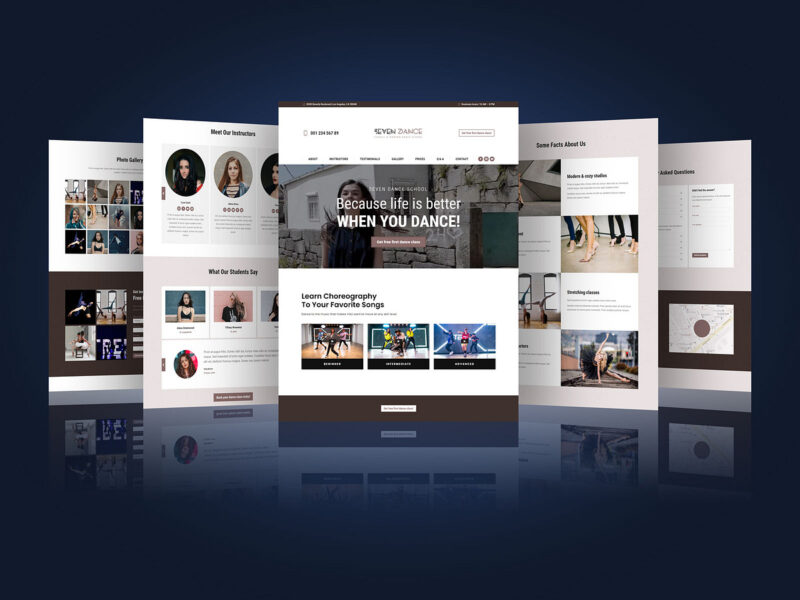In today's digitally driven landscape, integrating social media into your website design is more than just an option—it's a necessity. Whether you're an eCommerce brand, a service provider, or a creative agency, aligning your website with your social channels fosters better engagement, increases brand visibility, and enhances user trust. An expert website design company understands how to implement these features strategically, making your website a dynamic hub for interaction and conversion.
Why Social Media Integration Matters
Social media serves as an extension of your website—offering real-time interaction, social proof, and an opportunity to expand your digital ecosystem. Incorporating platforms like Instagram, Facebook, X (formerly Twitter), LinkedIn, and YouTube into your web design helps create a seamless user experience across all digital touchpoints.
When users can easily navigate between your site and social channels, they are more likely to engage with your content, share it, or follow your brand. Additionally, from an SEO and SGE standpoint, social media integration contributes to enhanced crawlability, stronger content signals, and better authority.
Best Practices for Integrating Social Media into Web Design
1. Add Social Media Icons Strategically
An expert website design company places social media icons where they’re easy to find without overwhelming the user experience. The most common placements include the website header, footer, or sidebar. Consistency in icon size, color, and design ensures they align with your brand identity.
2. Embed Social Feeds for Real-Time Engagement
Embedding live feeds from platforms like Instagram or X onto your homepage or blog section can keep your website content fresh. This provides users a glimpse into your latest updates without leaving the site, encouraging more time on page and better engagement rates.
3. Use Social Sharing Buttons
Incorporating share buttons on blog posts, product pages, or event listings encourages users to distribute your content within their own networks. A professional design company ensures these buttons are non-intrusive and responsive across all devices.
4. Highlight User-Generated Content (UGC)
User-generated content is a powerful trust-builder. An expert website design company will create dedicated sections to display UGC, such as social media testimonials, customer reviews, or fan-submitted photos. These not only foster community engagement but also add authenticity to your brand.
5. Integrate Social Login Options
Allowing users to log in or sign up using their social accounts simplifies the user journey. This is particularly effective for eCommerce sites, forums, or membership-based platforms. It reduces friction and speeds up the conversion funnel while capturing social data for personalization.
6. Enable Social Proof Elements
Displaying the number of shares, likes, or followers can significantly enhance credibility. Carefully positioned counters or mini-widgets show that your brand is actively followed and appreciated, creating an element of trust for new visitors.
7. Include Clickable Social Media Banners or Promotions
Designers can create clickable banners promoting specific social campaigns, contests, or giveaways. These can be used strategically on landing pages or in popups to draw attention to your social platforms and increase participation.
Benefits of Integrating Social Media into Website Design
Enhances Brand Visibility
When visitors share your content or interact with embedded feeds, your brand gains more exposure across various networks. This not only broadens reach but also drives more referral traffic back to your website.
Boosts Engagement and Retention
Dynamic social content keeps your website lively and engaging. Visitors are more likely to return when they find content that updates regularly, especially if it showcases real people interacting with your brand.
Strengthens SEO and Search Generative Experience
Search engines now factor social signals into their ranking algorithms. An expert website design company structures social integration in a way that supports better indexing, stronger domain authority, and improved performance in SGE-powered search results.
Builds Trust and Credibility
Seeing active social presence, reviews, and real-time content helps establish authenticity. This is especially crucial for new visitors who might be hesitant to engage or convert without reassurance.
Facilitates Cross-Platform Growth
Driving traffic between your website and social channels creates a feedback loop that nurtures audience growth on both ends. This multi-channel presence allows for broader marketing initiatives, from retargeting campaigns to influencer partnerships.
Choosing the Right Website Design Partner
Not all integrations are created equal. Poorly implemented social media elements can slow down your site, cause layout issues, or confuse users. An expert website design company not only understands design principles but also recognizes the technical aspects of seamless integration.
Look for a firm that offers:
- Customizable social media tools
- Responsive design across devices
- Optimization for page speed and user flow
- Experience with both frontend and backend integrations
- Strategic consultation tailored to your business goals
Such companies ensure that social features enhance rather than hinder your website's performance, aesthetics, and overall strategy.
Final Thoughts
Social media is not just a marketing add-on—it’s an integral part of your website’s ecosystem. With the guidance of an expert website design company, you can create a digital environment where your brand, content, and audience are deeply connected. Through strategic placement, dynamic content, and seamless navigation, your website becomes a powerful engine for growth, engagement, and credibility.
As users increasingly expect an interconnected experience, now is the time to align your web design with your social presence for maximum impact.





Comments